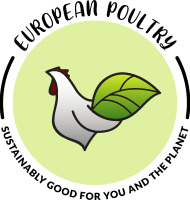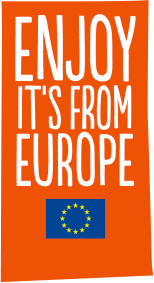But do you know what Avian Influenza reallyis? What’s its impact on the European poultry sector? Is there any risk for public health?
Keep reading to find the answer to your questions:
1. What is Avian Influenza and how does it spread among birds? [2]
Avian influenza is a viral illness primarily found in birds. Avian influenza viruses can be categorized as either high or low pathogenic, referred to as HPAI and LPAI respectively, based on their capacity to cause severe or mild illness and mortality in chickens.
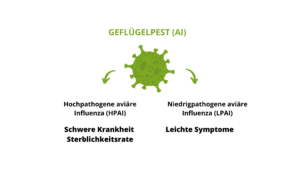 Wild birds, especially those living in aquatic environments, serve as natural hosts and reservoirs for all types of avian influenza viruses. As a result, they play a significant role in the development, persistence, and transmission of these viruses.
Wild birds, especially those living in aquatic environments, serve as natural hosts and reservoirs for all types of avian influenza viruses. As a result, they play a significant role in the development, persistence, and transmission of these viruses.
Poultry infected with LPAI may exhibit mild symptoms or none. Conversely, infections caused by HPAI can lead to severe illness and death among poultry.
AI viruses in birds are excreted through feces and respiratory secretions. Their transmission occurs primarily through direct contact with secretions from infected birds, particularly via feces or contaminated feed and water. Due to the resilience of AI viruses, which allows them to endure extended periods under low temperatures, they can also cling to farm equipment, facilitating their rapid spread between farms.
2. What is so concerning about Avian Influenza?[3]
Avian influenza poses significant risks to various sectors, including the poultry industry, the livelihoods of farmers, international trade, and the health of wild birds. It has garnered global attention due to its devastating effects.
For instance, some of these effects would affect:
- Farmers -they may face considerable mortality rates in their flocks, which often reach approximately 50%.
- Poultry industry in developing countries can lead to significant job losses.
- Labour market: in developing countries, the bird flu can lead to significant job losses in the poultry industry.
- Public image: Affected areas may suffer a decline in travel and tourism due to damaged public opinion.
- Healthy birds: To contain outbreaks, healthy birds are frequently slaughtered, which poses risks to animal and human welfare, leads to wastage of protein, and has economic consequences.
- Trade: The existence of highly pathogenic avian influenza (HPAI) hampers international trade in live birds and poultry meat, resulting in severe impacts on national economies.

3. Is it safe to consume poultry products in these circumstances? [4]
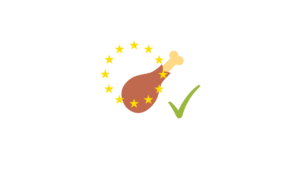 Sure, there is no evidence that avian influenza can be transmitted to humans through the consumption of contaminated poultry products. [5]
Sure, there is no evidence that avian influenza can be transmitted to humans through the consumption of contaminated poultry products. [5]
Poultry and poultry products available in the EU can be consumed and prepared in the usual manner, as long as proper cooking techniques and hygienic practices are followed.
Making sure the poultry meat is enough cooked is an important advice to follow. As well as ensuring that the preparation and cooking environment are properly cleaned and disinfected.
Ensuring food safety in our products is an essential part of the European poultry sector.
4. What are the measures being taken against AI? [6]
In the European Union, poultry farmers and Member states have implemented a range of measures to prevent the spread of bird flu, including increased surveillance and monitoring, as well as strict regulations on the importation of live birds and poultry products.
Other ways to limit the escalation of bird flu is through the culling of infected birds. This can help to contain the outbreak and prevent it from spreading to other flocks. However, this method is a challenging measure, as it can have significant economic consequences for the affected farmers and industries.
Other measures to prevent the spread of bird flu include increased biosecurity measures, such as strict hygiene protocols and limiting contact between flocks. Additionally, vaccination programs can help to protect birds from infection and reduce the risk of outbreaks.
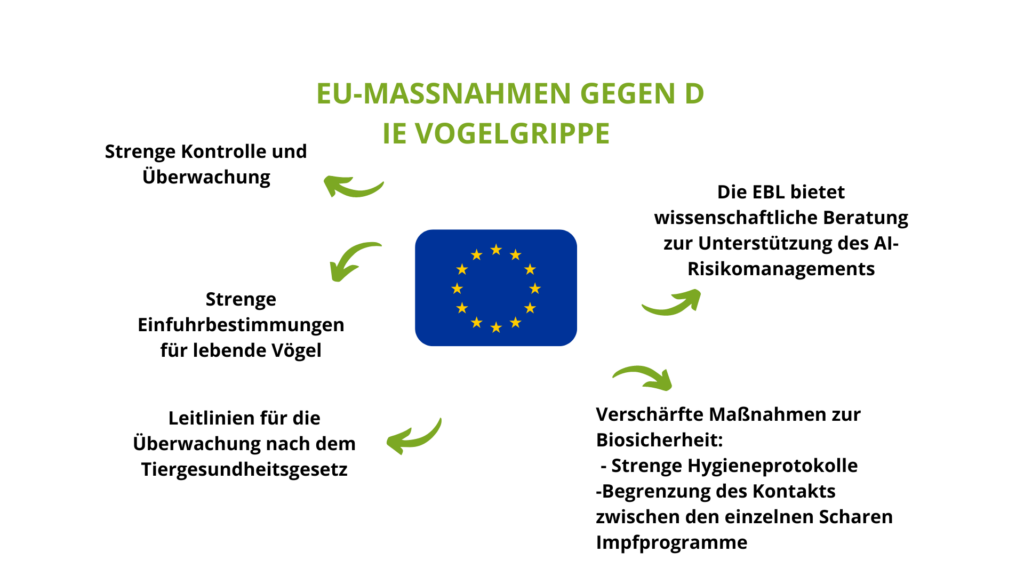
Since April 2021, the Animal Health Law on transmissible animal diseases applies in the EU. This new robust legal framework provides clear guidelines and harmonized measures for prevention and control of animal diseases that are transmissible to animals and humans. Therefore, it strengthens health and safety by updating the rules for the monitoring, containment, and elimination of avian flu. While the European Food Safety Authority (EFSA) provides scientific advice in this regard to support risk managers such as the European Commission, the European Parliament, and Member States in making informed decisions and taking necessary actions. Additionally, EFSA aids Member States in their data collection and surveillance endeavors.
5. Does AI represent a risk to people? [7]
The majority of avian influenza viruses present minimal threat to their natural hosts and do not transmit to humans.
However, in certain cases, certain variations of avian influenza viruses mightundergo mutations that enhance their ability to infect other species, includinghumans.
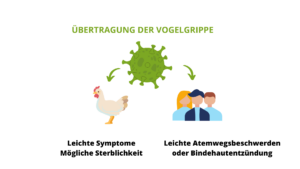
Individuals who come into proximity with infected birds are at risk of contracting avian influenza viruses. However, to minimize this risk, personal protective equipment (PPE) is used and direct contactwith sick or deceased birds is avoided, as well as their carcasses, excrement, and potentially contaminated surroundings.
Most instances of human infection result in mild respiratory symptoms or conjunctivitis.
Currently, affected farmers have as priority to keepas many birds safe as possible, while ensuring food safety and food security all along the production chain.
6. What’s the role of policy makers?
In short, controlling avian influenza is key to improving animal health and welfare, safeguarding livelihoods, and reducing the risks to public health. [8]
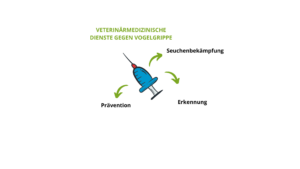
Preserving the health and well-being of our animals is a top priority for the European poultry farmers. The whole sector is entirely committed to taking the best care of the birds, investing in the most modern technology that helps monitoring their feed and weight, as well as light and temperature. However, technology is not all: it must be supported by continuous specialist staff training in order to keep up with the latest improvements and need of the sector.Veterinary Services have a key role to play in the fight against the Avian flu in the prevention, detection and control of the disease.



